N-Acetylethylenediamine
Synonym(s):N-Acetylethylenediamine
- CAS NO.:1001-53-2
- Empirical Formula: C4H10N2O
- Molecular Weight: 102.14
- MDL number: MFCD00008163
- SAFETY DATA SHEET (SDS)
- Update Date: 2024-11-22 13:59:06

What is N-Acetylethylenediamine?
Chemical properties
White to yellow crystalline solid
The Uses of N-Acetylethylenediamine
N-(2-Aminoethyl)acetamide may be used in the preparation of mixed two-component monolayers on glassy carbon. It may be used in the synthesis of lysidine.
What are the applications of Application
N-(2-Aminoethyl)acetamide is a useful chemical to synthesize lysidine. It can also be used to prepare two-component monolayers on glassy carbon
General Description
N-(2-Aminoethyl)acetamide is an organic building block.
Purification Methods
The acetyl-diamine has been fractionated under reduced pressure and fraction b 125-130o/5mm was refractionated, fraction b 132-135o/4mm was collected and solidified. It is a low melting hygroscopic solid which can be recrystallised from dioxane/Et2O. It is soluble in H2O, Et2O and *C6H6. The p-toluenesulfonate salt can be recrystallised from EtOH/EtOAc (1:8), has m 125-126o but the free base cannot be recovered from it by basifying and extracting with CH2Cl2. The picrate has m 175o (from EtOH) [Aspinall J Am Chem Soc 63 853 1941, Hall J Am Chem Soc 78 2570 1956]. [Beilstein 4 IV 1193.]
Properties of N-Acetylethylenediamine
| Melting point: | 50 °C (lit.) |
| Boiling point: | 128 °C/3 mmHg (lit.) |
| Density | 1.066 g/mL at 25 °C (lit.) |
| refractive index | n |
| Flash point: | >230 °F |
| storage temp. | Keep in dark place,Inert atmosphere,Room temperature |
| solubility | DMSO (Slightly), Methanol (Slightly) |
| form | Solid |
| pka | 15.97±0.46(Predicted) |
| color | White to Yellow Low-Melting |
| Sensitive | Hygroscopic |
| BRN | 1743120 |
| CAS DataBase Reference | 1001-53-2(CAS DataBase Reference) |
| NIST Chemistry Reference | N-Acetylethylenediamine(1001-53-2) |
Safety information for N-Acetylethylenediamine
| Signal word | Warning |
| Pictogram(s) |
 Corrosion Corrosives GHS05  Exclamation Mark Irritant GHS07 |
| GHS Hazard Statements |
H314:Skin corrosion/irritation H318:Serious eye damage/eye irritation H319:Serious eye damage/eye irritation |
| Precautionary Statement Codes |
P260:Do not breathe dust/fume/gas/mist/vapours/spray. P264:Wash hands thoroughly after handling. P264:Wash skin thouroughly after handling. P280:Wear protective gloves/protective clothing/eye protection/face protection. P301+P330+P331:IF SWALLOWED: Rinse mouth. Do NOT induce vomiting. P303+P361+P353:IF ON SKIN (or hair): Remove/Take off Immediately all contaminated clothing. Rinse SKIN with water/shower. P305+P351+P338:IF IN EYES: Rinse cautiously with water for several minutes. Remove contact lenses, if present and easy to do. Continuerinsing. P405:Store locked up. P501:Dispose of contents/container to..… |
Computed Descriptors for N-Acetylethylenediamine
New Products
(S)-3-Aminobutanenitrile hydrochloride 4-Methylphenylacetic acid N-Boc-D-alaninol N-BOC-D/L-ALANINOL Tert-butyl bis(2-chloroethyl)carbamate 3-Morpholino-1-(4-nitrophenyl)-5,6-dihydropyridin- 2(1H)-one Furan-2,5-Dicarboxylic Acid Tropic acid 1-Bromo-3,5-Di-Tert-Butylbenzene S-2-CHLORO PROPIONIC ACID ETHYL ISOCYANOACETATE 2-Bromo-1,3-Bis(Dimethylamino)Trimethinium Hexafluorophosphate 4-IODO BENZOIC ACID 3-NITRO-2-METHYL ANILINE 1-(2,4-DICHLOROPHENYL) ETHANAMINE (2-Hydroxyphenyl)acetonitrile 4-Bromopyrazole 2-(Cyanocyclohexyl)acetic acid 4-methoxy-3,5-dinitropyridine 1-(4-(aminomethyl)benzyl)urea hydrochloride 2-aminopropyl benzoate hydrochloride diethyl 2-(2-((tertbutoxycarbonyl)amino) ethyl)malonate tert-butyl 4- (ureidomethyl)benzylcarbamate Ethyl-2-chloro((4-methoxyphenyl)hydrazono)acetateRelated products of tetrahydrofuran

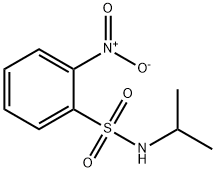
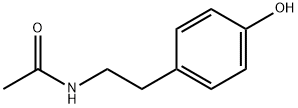
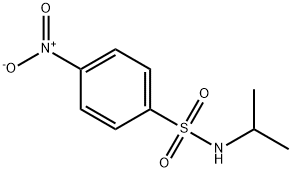

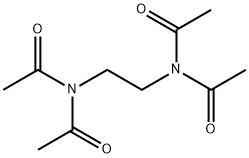
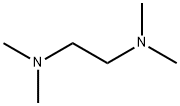

You may like
-
 N-Acetylethylenediamine CAS 1001-53-2View Details
N-Acetylethylenediamine CAS 1001-53-2View Details
1001-53-2 -
 N-Acetylethylenediamine CAS 1001-53-2View Details
N-Acetylethylenediamine CAS 1001-53-2View Details
1001-53-2 -
 N-Acetylethylenediamine 98% CAS 1001-53-2View Details
N-Acetylethylenediamine 98% CAS 1001-53-2View Details
1001-53-2 -
 N-(2-aminoethyl)acetamide 95.00% CAS 1001-53-2View Details
N-(2-aminoethyl)acetamide 95.00% CAS 1001-53-2View Details
1001-53-2 -
 N-(2-Aminoethyl)acetamide CAS 1001-53-2View Details
N-(2-Aminoethyl)acetamide CAS 1001-53-2View Details
1001-53-2 -
 1975-50-4 98%View Details
1975-50-4 98%View Details
1975-50-4 -
 14714-50-2 (2-Hydroxyphenyl)acetonitrile 98+View Details
14714-50-2 (2-Hydroxyphenyl)acetonitrile 98+View Details
14714-50-2 -
 118753-70-1 98+View Details
118753-70-1 98+View Details
118753-70-1